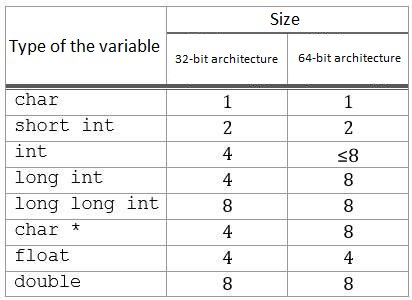Would you like to know more about the size of variables in C? Then read this sample and you’ll become more knowledgeable on the issue. AssignmentShark C programming homework help service has published this example so that students can solve their academic problems. On our blog, you can find many samples completed by experts from diverse fields, such as physics, math, IT, astronomy, and others.
You should also know that we are able to create a specific sample just for you. When you need assistance, just fill the order form, specify the requirements, and wait for the top-notch example that our experts will prepare for you. When you use AssignmentShark online assignment help, you can be sure that all your personal and financial data will be kept secret. We provide our clients and experts with nicknames so that they won’t know each other’s real names. Also, we use independent payment services to receive payments. Do you need to get help with an issue about the size of variables in C? Be quick to contact us!
The Size of Numeric Types in C
Every programmer who has tried to use C or C-like programming languages has probably faced the issue that the size of the variables of the same type may vary on different machines. After some research, many settled down in understanding that even the size of the pointer depends on the implementation of the compiler and the architecture of the machine. But why? And how can we explain the particular size in a particular case?
Computers and compilers support different types of data storage, and in particular, integers and floating point numbers. Every single type can differ in, for example, the way to represent the stored information and the amount of memory.
C programming language supports different types of data storage, such as integers and floating point numbers. The character type of a char, typically used to represent a single character, can also store unsigned numbers. The most common for these purposes is that “int” forms a whole family of types due to the possible prefixes: short, long, and long long, and all have different sizes. The table below shows how many bytes are in the memory of each type depending on the architecture of the system.
We may notice that the size depends on the architecture of the machines (strictly speaking, also on the implementation of the compiler). And what about the sizes?
Note: short, “normal” int and long long always have the constant sizes 2, 4, and 8 bytes, respectively. The prefix “long” means that for storing the variable we should use one machine word, which is 4 bytes on 32-bit machines and 8 bytes on 64-bit respectively.
The same situation is with pointers (char *): the system uses the same one machine word storage addresses, the size of which depends on the architecture.

